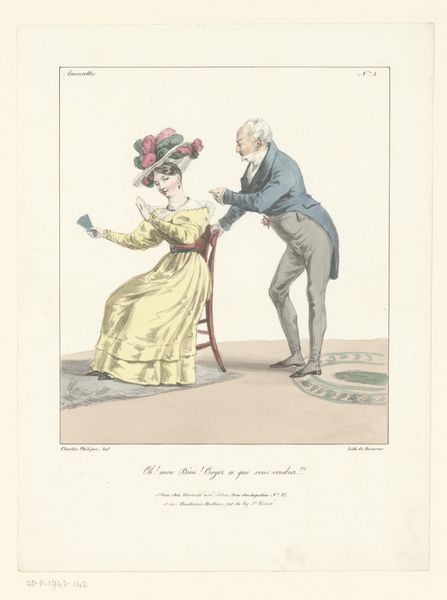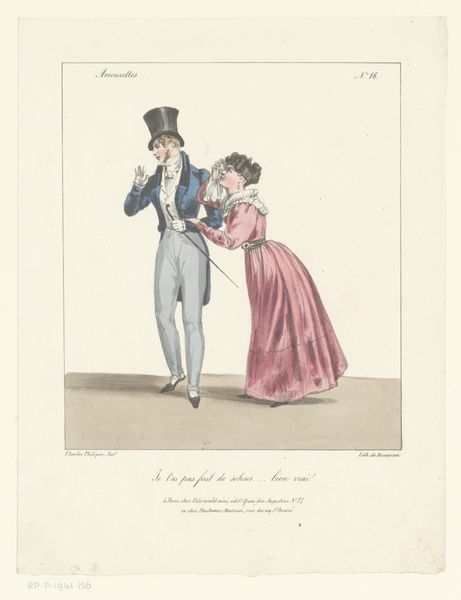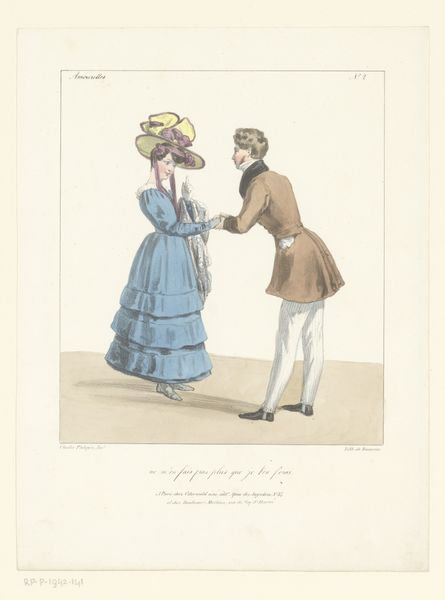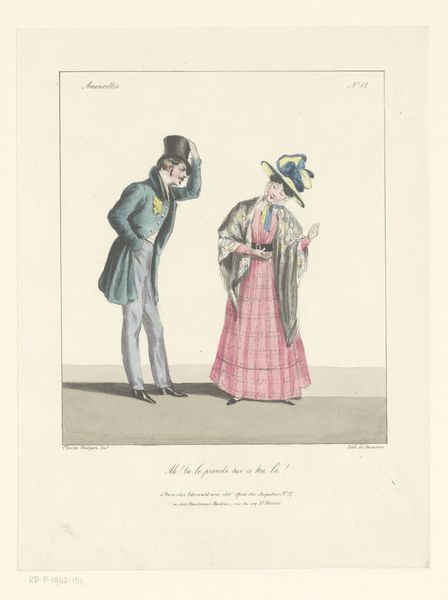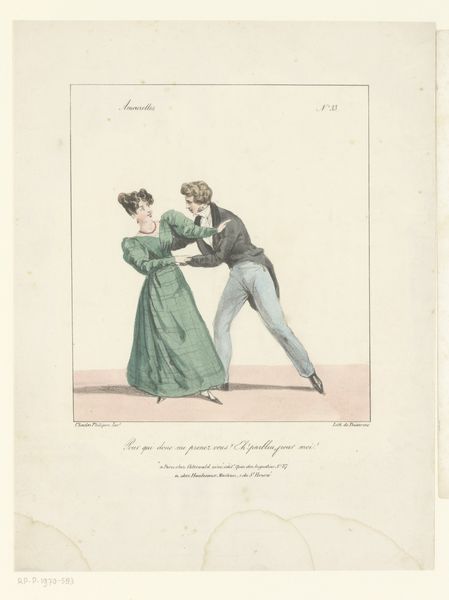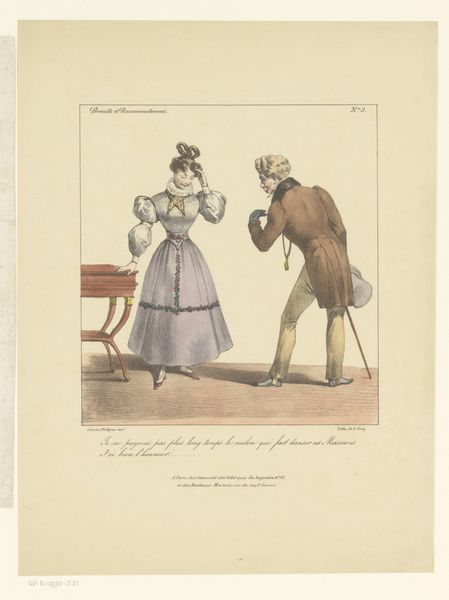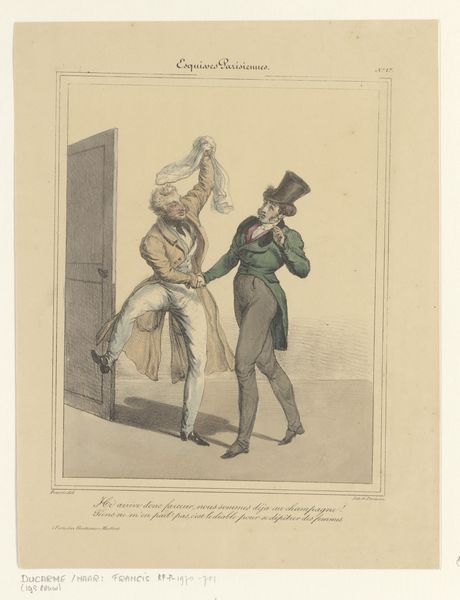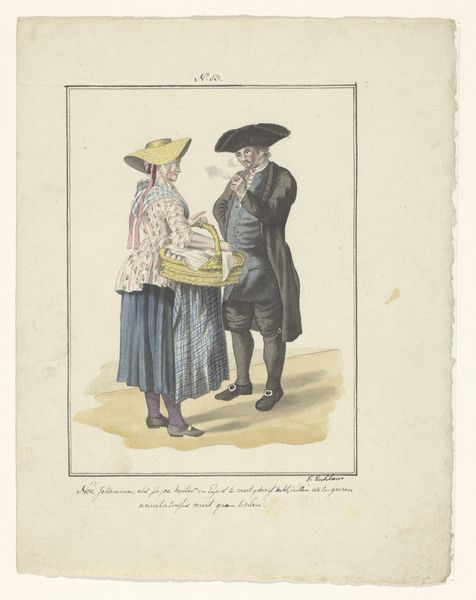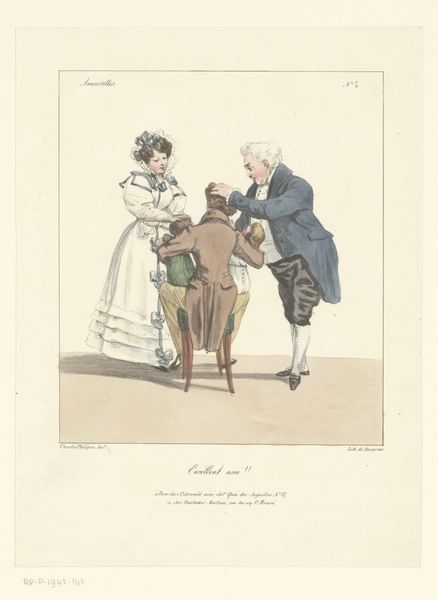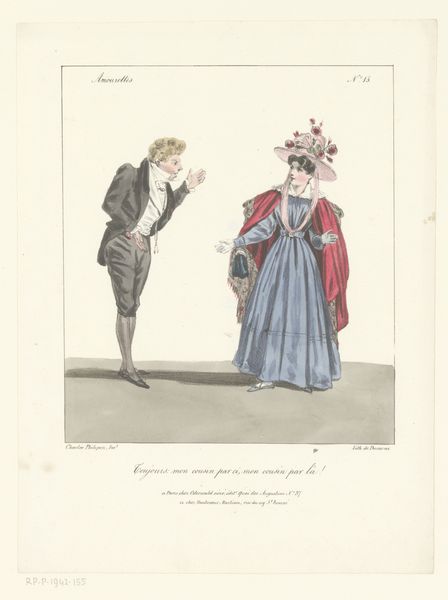
Witte man bekijkt zwarte baby in handen van witte vrouw 1827 - 1829
0:00
0:00
charlesphilipon
Rijksmuseum
drawing, print, watercolor
#
portrait
#
drawing
#
narrative-art
# print
#
caricature
#
traditional media
#
personal sketchbook
#
watercolor
#
romanticism
#
watercolour illustration
#
cartoon carciture
Dimensions: height 292 mm, width 222 mm
Copyright: Rijks Museum: Open Domain
Editor: So, here we have Charles Philipon’s watercolor and print, "Witte man bekijkt zwarte baby in handen van witte vrouw", from around 1827 to 1829. The title itself is pretty direct, but the scene has this staged feel, like a commentary. What can you tell us about this work? Curator: Right away, I notice the materials used: watercolor and printmaking, suggesting a mass-produced image meant for circulation. Given the era, this piece isn’t just a depiction, but likely participates in the construction of racial identities through its method of reproduction. It highlights the artist's labor and the social consumption of the image. The very act of creating and disseminating this image is a political statement. Editor: Interesting! So the material, being a print, implies an agenda? Curator: Absolutely. Think about who controlled the means of production and distribution. A printed image reaches a wider audience than a painting, imbuing it with power. And look at the figures: their clothing, their expressions…these details speak volumes about the societal dynamics being portrayed and consumed. Editor: The way you describe it makes me realize that it’s not only what is being depicted but how it's being distributed that creates the context. It's no longer a passive observation. Curator: Exactly! It’s the material process – the artist’s choices, the printing press, the distribution network – that actively shapes the meaning and impact of this image. We need to think about who profited from its production, and what social narratives it helped perpetuate. Editor: This really changes how I view the piece. I was initially focused on the scene depicted, but now I see how the materiality itself contributes to its message. Thanks! Curator: Indeed. Analyzing the "how" of artmaking reveals hidden social and political dimensions often overlooked in traditional art historical analysis.
Comments
No comments
Be the first to comment and join the conversation on the ultimate creative platform.
